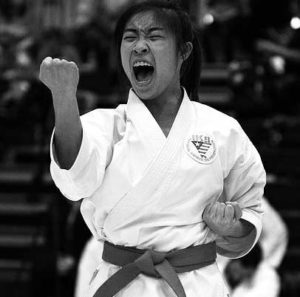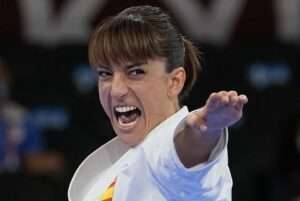Screaming and vocalization play a significant role in various sports, including martial arts. In disciplines such as karate or kung fu, screaming during strikes is a common practice believed to enhance power and force generation. By forcefully expelling air during a strike, martial artists aim to optimize their movements and generate additional power.

Beyond the physical aspect, screaming in martial arts serves other purposes as well. Similar to other sports, it can help athletes enhance focus and concentration. By vocalizing their intentions, martial artists block out distractions and center their attention on executing precise techniques. Moreover, screaming can serve as a form of intimidation, creating psychological pressure on opponents.
Breathing control and energy release are vital aspects of martial arts, and screaming plays a role in facilitating them. Vocalization helps martial artists synchronize their breath with their movements, promoting efficient energy flow and enhancing overall performance.
In addition to the practical benefits, vocalizations or shouts in martial arts have cultural and traditional significance. Known as “kiai”, “Kake-goe” or “yelling,” these sounds symbolize focus, determination, and a connection between the mind and body. They hold deep-rooted meanings in many martial arts disciplines.

The positive effects of screaming and vocalization in sports, including martial arts, have been explored through scientific research. For example, a study conducted by scientists at Drexel University in 2014 revealed that screaming while squeezing a handgrip dynamometer increased grip strength by up to 25 percent. This finding indicates that vocalization during exertion can generate additional force and power.
Further research has shown that screaming can enhance various aspects of performance. Studies have demonstrated that vocalization improves maximum jumping distance, pain endurance, and coordination. This suggests that screaming during sports activities can provide athletes with an advantage by optimizing their physical capabilities.
In 2019, a study published in the journal “Perception” focused on the effects of screaming on visual perception. The researchers found that making the face associated with screaming increased alertness and broadened the field of vision. This suggests that screaming may enhance performance in sports by improving focus and visual awareness.
While the impact of screaming in martial arts has been explored, it is important to note that scientific understanding is continually evolving. The specific benefits may vary depending on the martial arts style, practitioner, and context.
Overall, screaming in sports, including martial arts, serves various purposes. It allows athletes to release energy and exertion, improve focus and concentration, express intense emotions, and boost motivation and confidence. Scientific evidence supports the notion that screaming can increase grip strength, jumping distance, pain endurance, and coordination. Furthermore, its evolutionary roots related to fight-or-flight responses suggest potential benefits for enhancing physical performance.
Despite the potential for criticism or startling spectators, the advantages of vocalization should not be overlooked. Athletes can leverage screaming as a tool to maximize their abilities and gain an edge in the competitive arena.
Thanks for reading.
Gert
